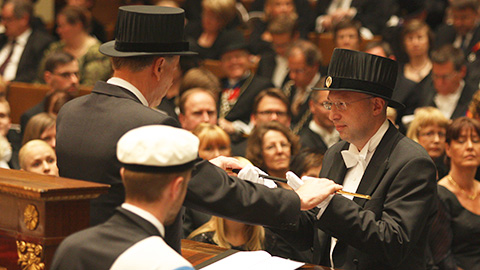This Year’s Nobel Prize in Chemistry Has Roots at the University of Turku
The University of Turku Doctor Honoris Causa Stefan W. Hell is one of the three recipients of the Nobel Prize in Chemistry this year. The Nobel Prize in Chemistry was awarded to the developers of optical microscopes with high resolution at the nanometer scale.

Stefan W. Hell, who worked at the University of Turku as a researcher in the 1990s, was conferred as doctor honoris causa of the Faculty of Medicine of the University of Turku in the spring of 2009.
The Nobel Prize in Chemistry was awarded to Eric Betzig, William E. Moerner and Stefan W. Hell. The trio has done groundbreaking work in developing high resolution microscopy.
Stefan W. Hell from Germany was conferred as the doctor honoris causa of the Faculty of Medicine of the University of Turku in the spring of 2009. During his doctor honoris causa lecture in May 2009, Hell explained how the development of microscopes has revolutionised research in life sciences.
– It can be said – and this is not exaggeration – that the development of resolution began in Turku, in the Unit of Medical Physics in 1993, stated Hell.
Professor Pekka Hänninen from the Faculty of Medicine is delighted about the award received by his long-term partner in co-operation. Hänninen states that the inventions of Hell in the years 1994 and 1995 mentioned in the bulletin of the Nobel Committee were made at the University of Turku where Hell worked as a post doc researcher at the time.
– The Nobel was awarded for research whose core publications and innovation originated at the University of Turku, Hänninen summarises.
Originally, Hänninen met Hell in Heidelberg at the European Molecular Biology Laboratory. From Heidelberg, Hell came to Turku and received funding from the Academy of Finland for a project whose starting points were doubted by many big funding countries of the research.
– For the most part, high resolution microscopy originated in Turku. In the 1990s, Stefan W. Hell was the head of the research group developing the principle of high resolution microscopy, says Hänninen.
Hell’s research played a part in creating the basis for the nationally significant Turku BioImaging research infrastructure that was established in 2007.
Text: Jussi Matikainen
Translation: Aino Koivisto